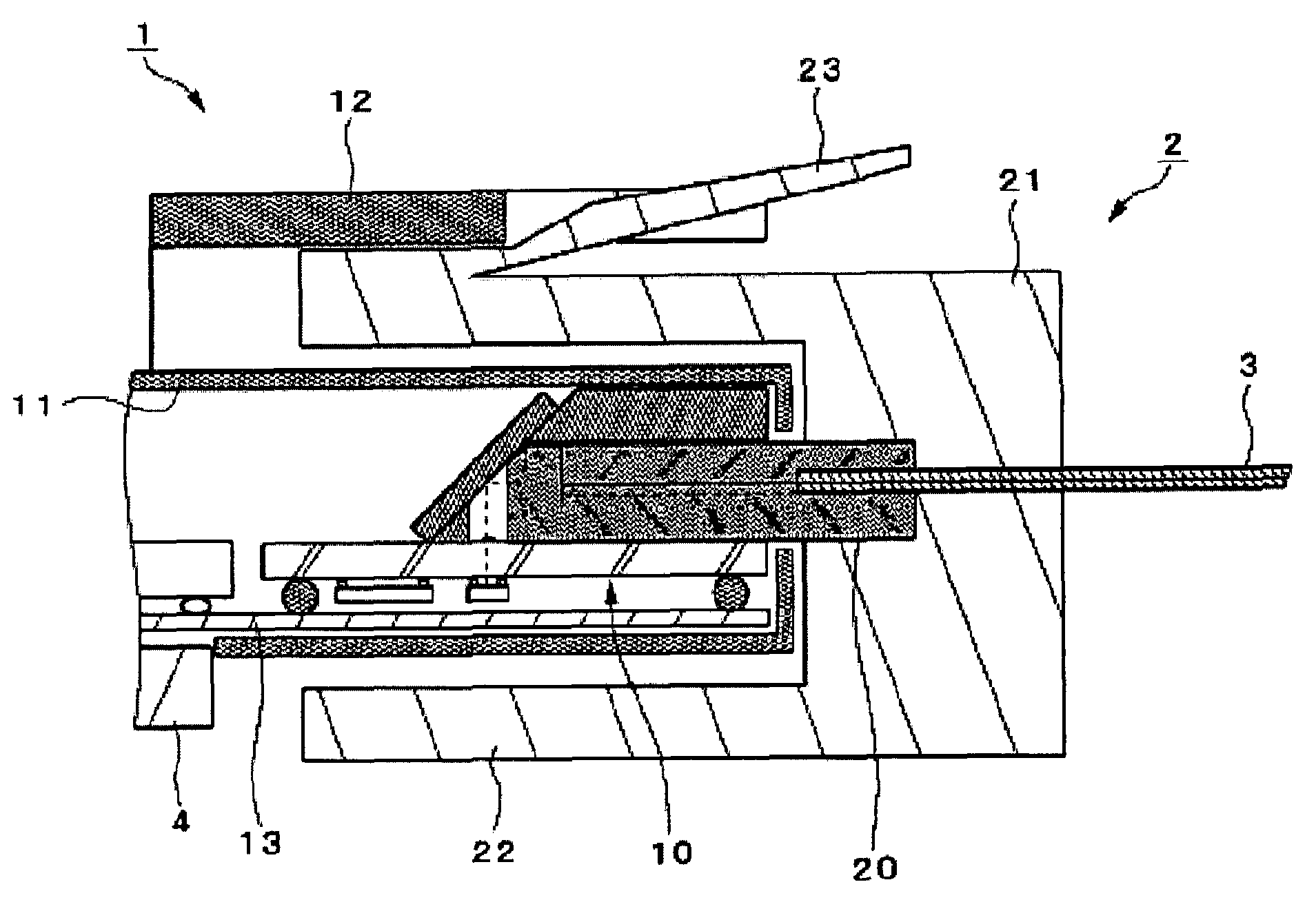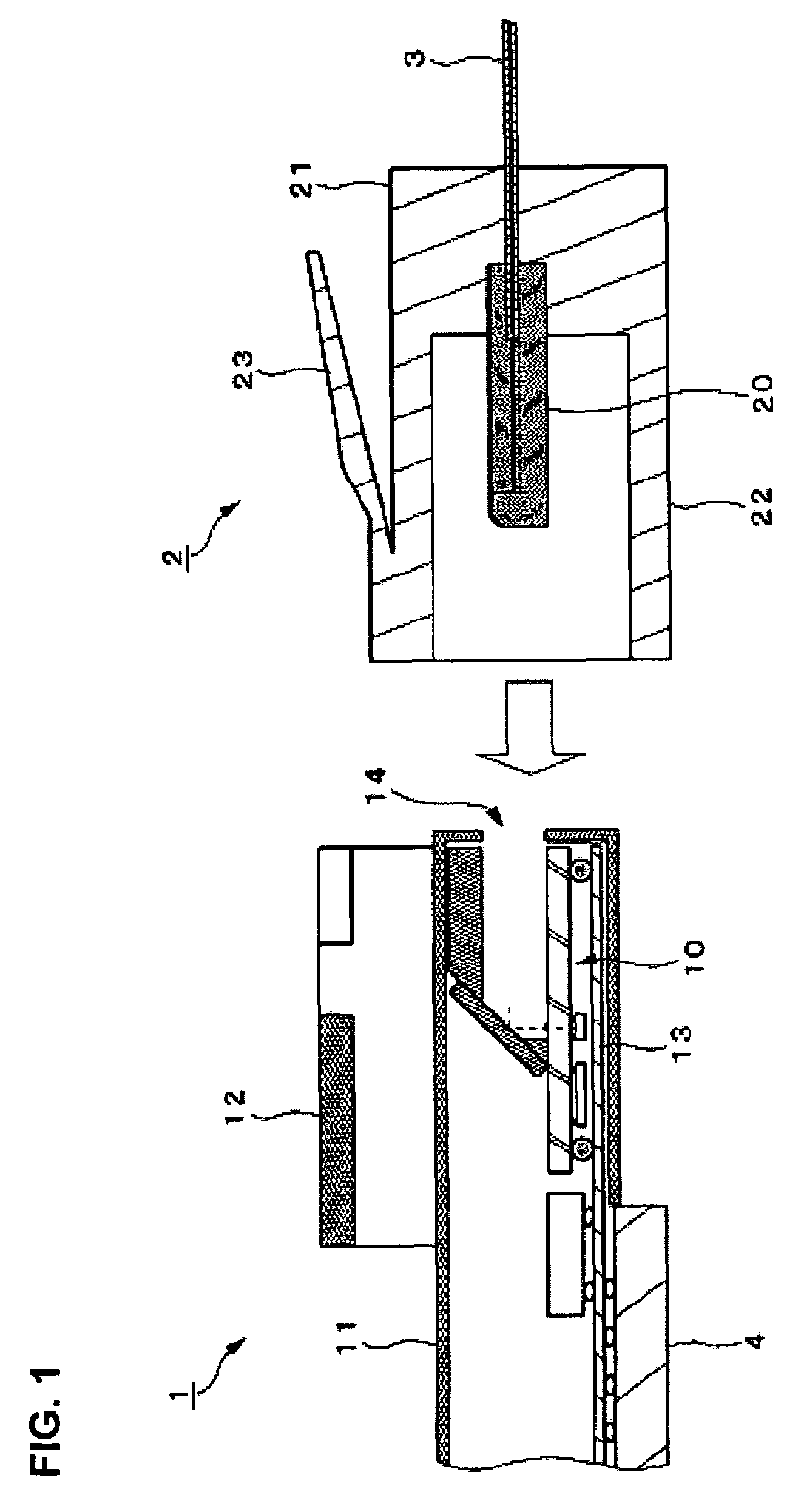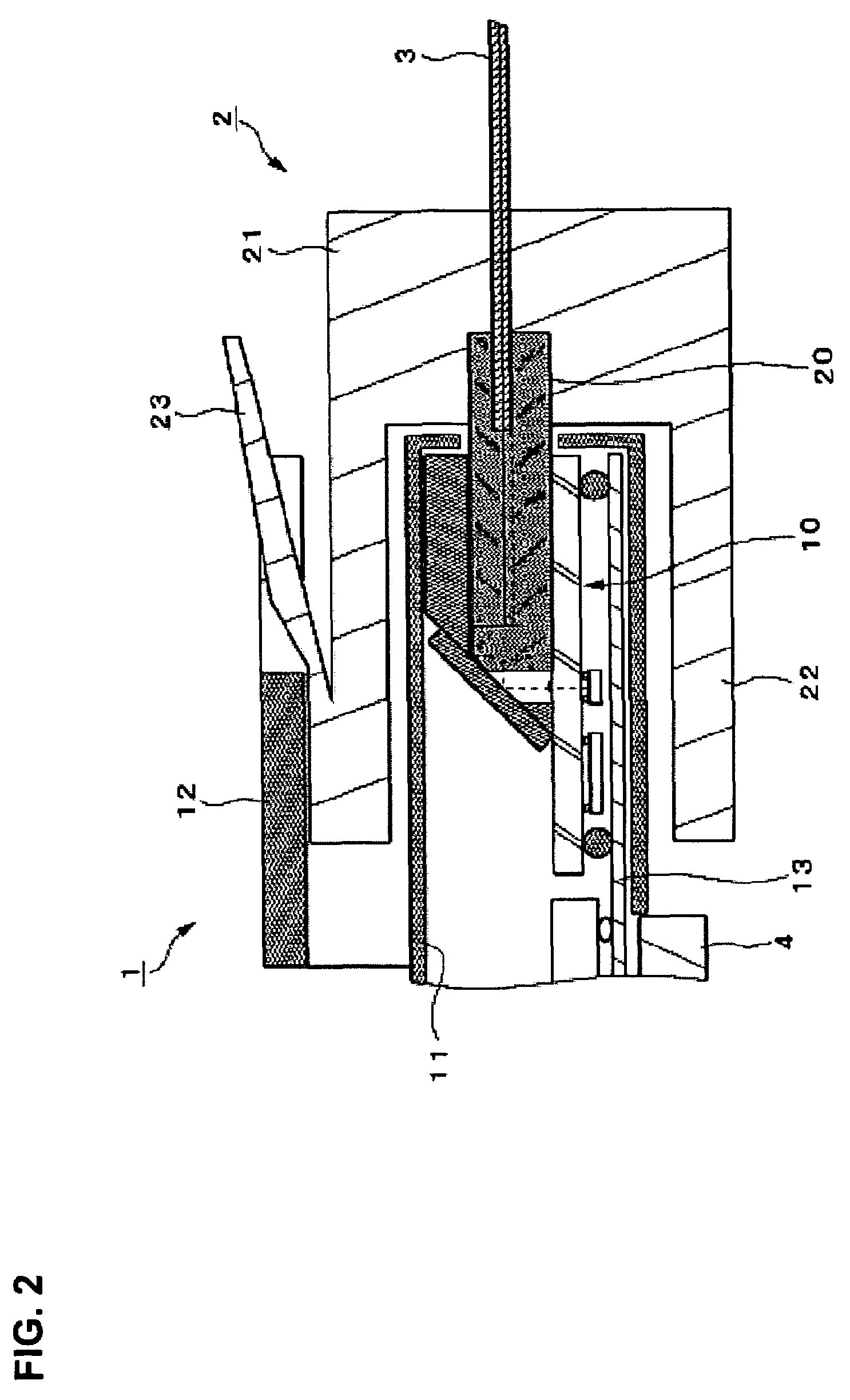Optical connector
a technology of optical connectors and connectors, applied in the field of optical connectors, can solve the problems of attenuation of signal level, limitation of cable length, and more inconvenience, and achieve the effect of accurate positioning and stably maintaining
- Summary
- Abstract
- Description
- Claims
- Application Information
AI Technical Summary
Benefits of technology
Problems solved by technology
Method used
Image
Examples
Embodiment Construction
[0028]FIG. 1 shows views (cross-sectional views) for describing the structure of an optical connector in accordance with an embodiment of the present invention. The optical connector of the present embodiment shown in FIG. 1 is composed of a male connector 2 that supports a part of a tape fiber 3 (optical transmission medium), and a female connector 1 that is structured to be engageable with the male connector 2. Also, FIG. 2 is a view for describing the state in which the female connector 1 engages the male connector 2.
[0029]The female connector 1 includes a photoelectric conversion module 10, a housing (first housing) 11, a part to be latched 12 and a flexible wiring substrates 13, and may be mounted on an electronic equipment, such as, for example, a personal computer.
[0030]The photoelectric conversion module 10 has the function to convert an electrical signal to an optical signal and vice verse, and more specifically, has the function to convert an electrical signal into an opti...
PUM
 Login to View More
Login to View More Abstract
Description
Claims
Application Information
 Login to View More
Login to View More - R&D
- Intellectual Property
- Life Sciences
- Materials
- Tech Scout
- Unparalleled Data Quality
- Higher Quality Content
- 60% Fewer Hallucinations
Browse by: Latest US Patents, China's latest patents, Technical Efficacy Thesaurus, Application Domain, Technology Topic, Popular Technical Reports.
© 2025 PatSnap. All rights reserved.Legal|Privacy policy|Modern Slavery Act Transparency Statement|Sitemap|About US| Contact US: help@patsnap.com



